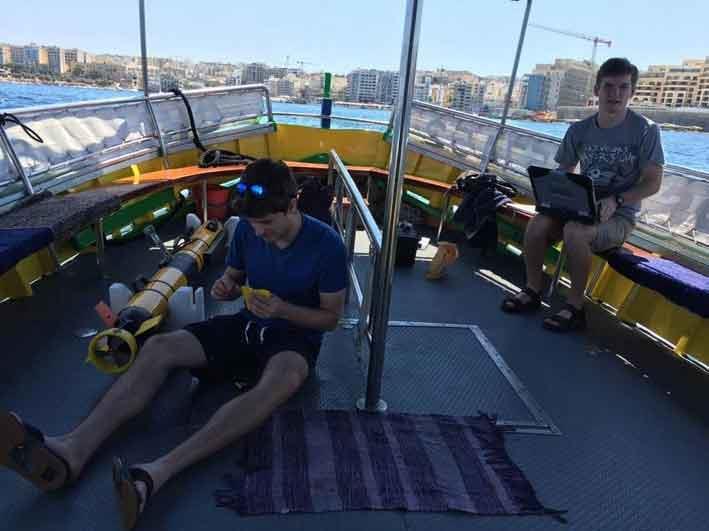Students from California Polytech University have located a sunken British World War II warplane off the coast of Malta as part of an underwater search and mapping project, a Californian newspaper called The Tribune reports.
The warplane was reportedly flying off the coast of Malta when it suffered engine trouble and had to resort to an emergency landing on the Mediterranean Sea. The pilot and co-pilot were both luckily rescued as it had transpired that two Englishmen who were on leave just happened to be sailing out at sea on the day in question. While the crew was saved, the plane sank to the bottom.
Students used a 6-foot robot to locate the sunken plane. It is an “autonomous underwater vehicle”, using sonar, photography and video technology to search the seabed, The Tribune reports.
After collaborating with University of Malta in order to verify that the sunken plane was indeed the one they were after, it was found at a depth of around 60 metres.
The plane is known as a Fairey Swordfish, which is a biplane torpedo bomber used by England’s Royal Navy in World War II and in the 1930s.

The Tribune says that “nearly 2,400 Fairey Swordfish aircraft were built between 1936 and 1944 and sank more tonnage of enemy ships than any other Allied plane during World War II”.
The bomber in question is said to have gone down some three miles off the coast of Sliema.
Divers with the University of Malta marine archaeology department examined the Swordfish bomber. It was found in a state of decay, down to a skeleton forming part of an ecosystem for baby fish and crustaceans.
The plane is going to be left where it was found.
“The Cal Poly team, working with Harvey Mudd College and the University of Malta, is part of a three-year programme called ICEX (International Computer Engineering Experience) that develops search and mapping algorithms and conducts expeditions,” writes the Tribune.

From the way it was found, researches deduced that the sea landing was a controlled one. This could be seen from the intact skeleton. Had the landing not been controlled, the plane would have gone into freefall and usually the structure’s integrity is not kept intact, neither were several pieces found scattered on the seabed.
The three California Polytech students who participated in the mission were Amy Lewis, Roslyn Patrick-Sunnes and Sam Freed, all computer science majors. Three additional Harvey Mudd students also helped lead the discovery.
The three-year project is funded by a $250,000 grant from the National Science Foundation.